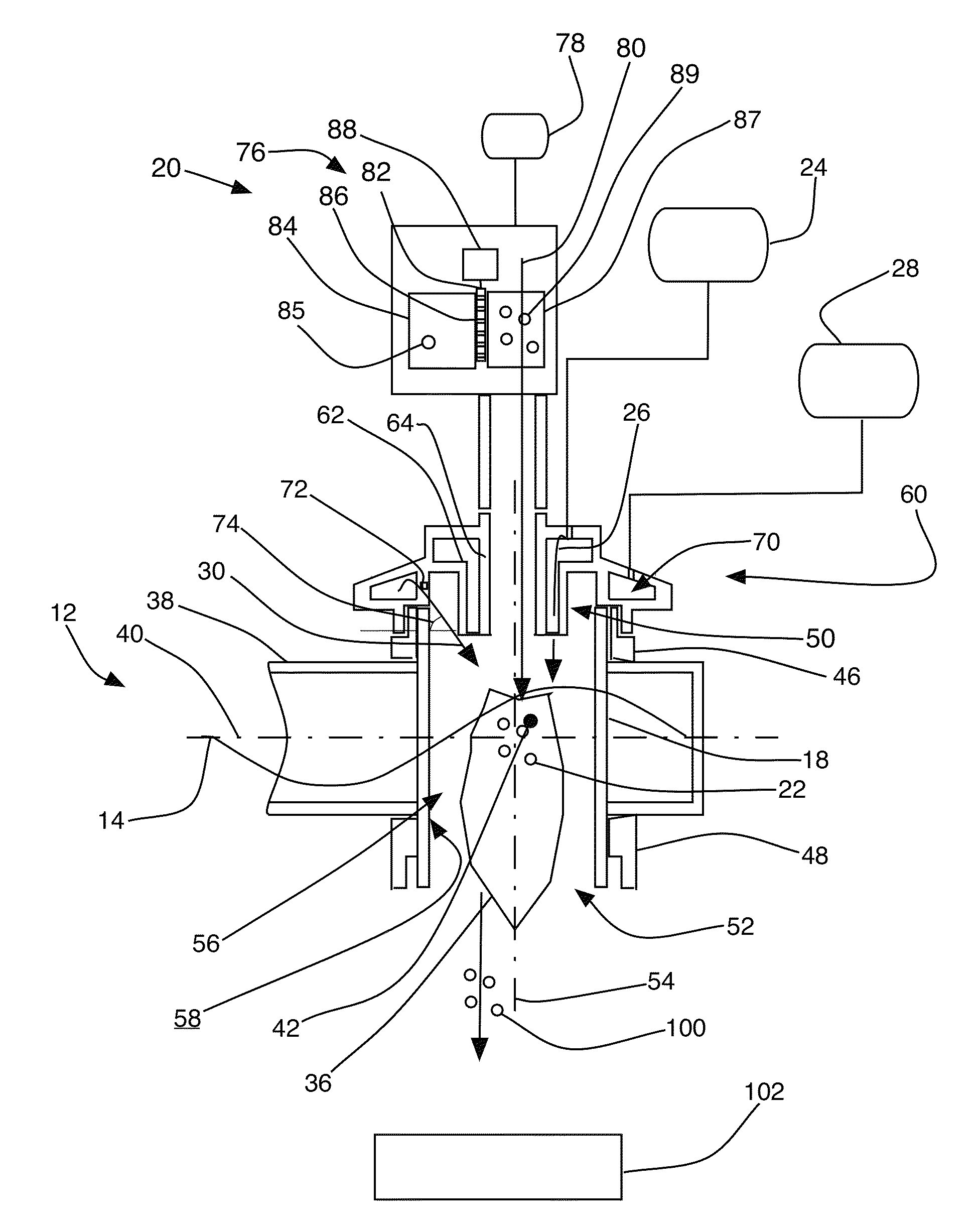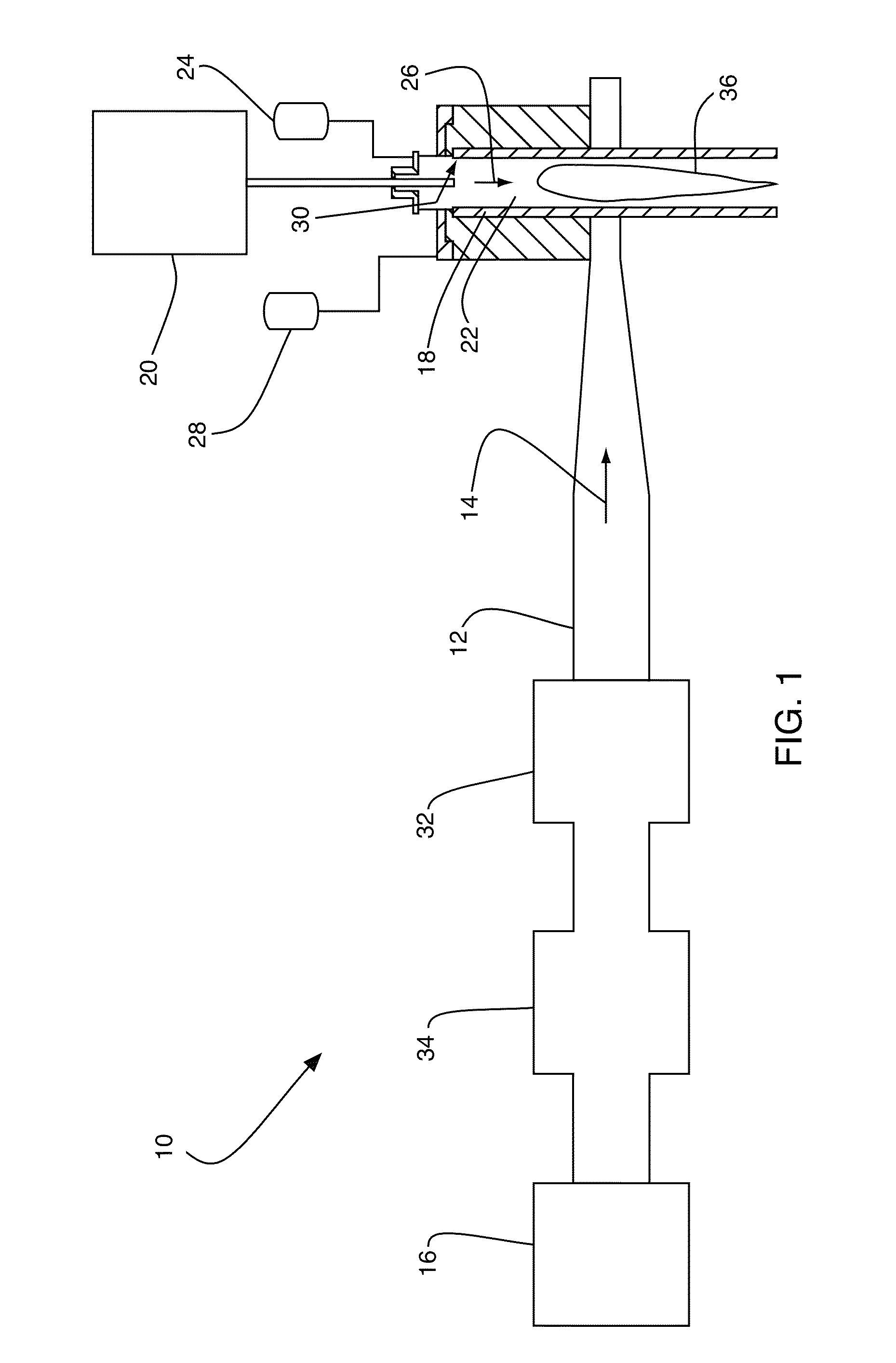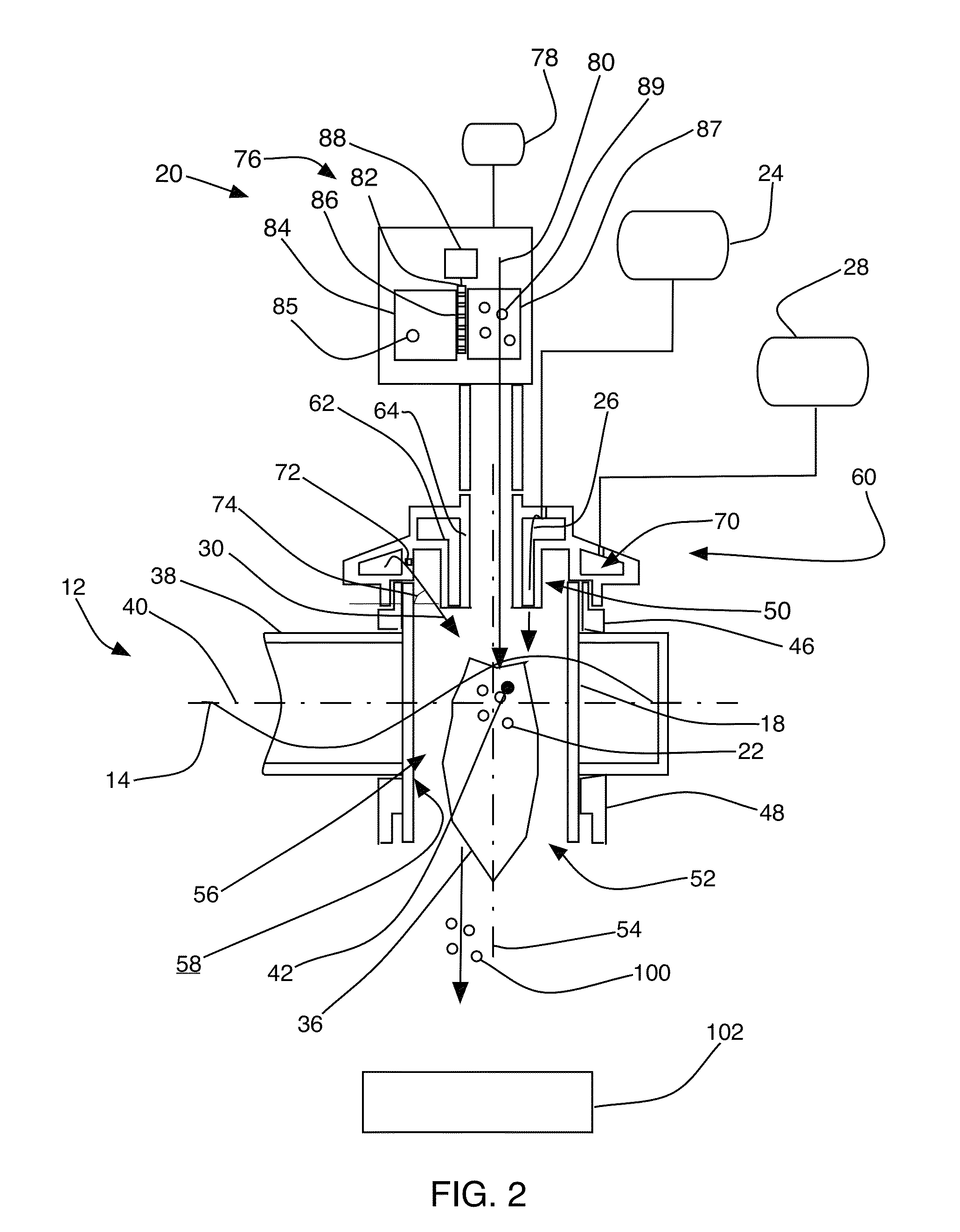Microwave plasma apparatus and method for materials processing
a technology of microwave plasma and material processing, which is applied in the direction of manufacturing tools, polycrystalline material growth, electric/magnetic/electromagnetic heating, etc., can solve the problems of harming the properties of the end-point ceramic body, unable to achieve ideal deposition conditions with current spray technology, and difficult to achieve uniform droplet temperature. , to achieve the effect of enhancing the coupling of microwave radiation, minimizing leakage of microwave radiation, and high temperatur
- Summary
- Abstract
- Description
- Claims
- Application Information
AI Technical Summary
Benefits of technology
Problems solved by technology
Method used
Image
Examples
Embodiment Construction
[0022]Referring to FIG. 1, a microwave plasma apparatus 10 for material processing, in accordance with an embodiment of the present invention, includes a waveguide 12 that guides microwave radiation 14 from a microwave source 16 to a plasma chamber 18 that penetrates the waveguide 12. The apparatus 10 also includes a material feeding system 20 that feeds a process material 22 to the plasma chamber 18, a pressurized source 24 that supplies a process gas 26 to the plasma chamber 18, and a pressurized source 28 that supplies a shrouding gas 30 to the plasma chamber 18. The apparatus 10 further includes an impedance matching unit 32 that communicates with the microwave source 16 and the waveguide 12 to minimize reflection of the microwave radiation 14 from the plasma chamber 18 to the microwave source 16. The apparatus 10 can also include a reflected power protector 34 in communication with the waveguide 12. The reflected power protector 34 could be a waveguide circulator that deflects ...
PUM
| Property | Measurement | Unit |
|---|---|---|
| diameter | aaaaa | aaaaa |
| diameter | aaaaa | aaaaa |
| diameter | aaaaa | aaaaa |
Abstract
Description
Claims
Application Information
 Login to View More
Login to View More - R&D
- Intellectual Property
- Life Sciences
- Materials
- Tech Scout
- Unparalleled Data Quality
- Higher Quality Content
- 60% Fewer Hallucinations
Browse by: Latest US Patents, China's latest patents, Technical Efficacy Thesaurus, Application Domain, Technology Topic, Popular Technical Reports.
© 2025 PatSnap. All rights reserved.Legal|Privacy policy|Modern Slavery Act Transparency Statement|Sitemap|About US| Contact US: help@patsnap.com



